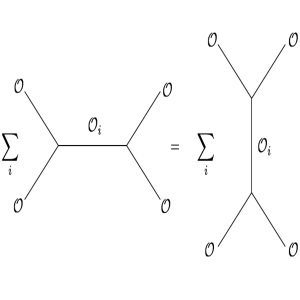What does boiling water have in common with magnets and the horizon of black holes? They are all described by conformal field theories (CFTs)! We are used to physical systems that are invariant under translations and rotations. Imagine a system which is also invariant under scale transformations. Such a system is described by a conformal field theory. Remarkably, many physical systems admit such a description and conformal field theory is ubiquitous in our current theoretical understanding of nature.
Two-dimensional CFTs are very special: in this case the conformal group is actually infinitely dimensional! This has led to remarkable progress over the last four decades. In contrast, CFTs in higher dimensions are notoriously difficult to deal with. First of all, in this case symmetries are much less powerful. Furthermore, the standard textbook methods to compute observables in physical theories, called perturbative methods, only apply to theories with small coupling constants (giving an expansion in powers of these couplings), but generic CFTs do not have small parameters! Because of these reasons, progress in higher dimensional CFTs proved to be much harder than in the two-dimensional case.
The breakthrough came in 2008 when it was shown how to attack higher dimensional CFTs with the conformal bootstrap program. The basic idea is to resort to symmetries and consistency conditions and ask the question: which values of the observables I am interested in would lead to a consistent CFT? The basic observables in a CFT are correlators of local operators $\langle {\cal O}(x_1) \cdots {\cal O}(x_n) \rangle$, and one of the consistency conditions is that these correlators have the right properties under permutation of the insertion points, for instance: $$\langle {\cal O}(x_1){\cal O}(x_2){\cal O}(x_3){\cal O}(x_4)\rangle =\langle {\cal O}(x_3){\cal O}(x_2){\cal O}(x_1){\cal O}(x_4)\rangle$$ Believe it or not, when combined with conformal symmetry these conditions are incredibly constraining! The conformal bootstrap proved to be very powerful, and its range of applicability is very vast: it basically applies to every CFT.
While the original proposal, and most of the work which followed it, was numeric in nature, my collaborators and I have been developing a method to obtain analytic results in CFTs, following the bootstrap philosophy. Although still in its infancy, this method has already produced remarkable results for vast families of CFTs, including both perturbative and non-perturbative theories. For perturbative theories it offers an alternative to standard diagrammatic methods, but without many of the problems associated with them. An important conformal theory that has been studied for many decades, relevant for boiling water and a generalisation of the Ising Model, is the Wilson-Fisher model. For this model, and for certain families of observables, the results from our methods have already surpassed the available results from diagrammatic techniques! It will be very exciting to see where all this leads.


